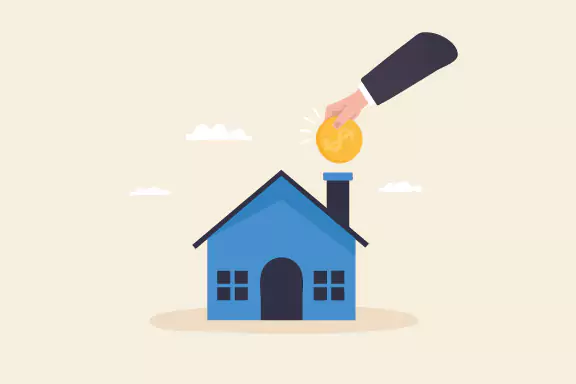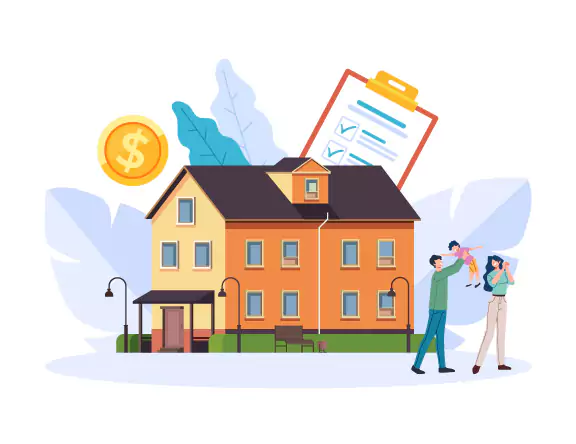Moving to the United States can be an exciting adventure, but it can also feel overwhelming, especially when it comes to buying your first home. If you are unfamiliar with the local real estate market and financial landscape, the process can be intimidating. However, rest assured: buying a home in the U.S. doesn’t have to be complicated. With the right guidance and a little preparation, it can be a smooth and rewarding experience.
Let’s start by considering an example. Imagine you’re a new immigrant to the U.S., and you’ve finally settled into your new life here. After months of renting and adjusting to the country, you’re ready to take the next step—buying your first home.
But where do you start?
What should you know about down payments, mortgage rates, closing costs, and other essential factors? Let’s break it down in this step-by-step guide.
The Home Buying Process: What Are the Main Factors When Buying a Home?
When you’re buying a home in the U.S., there are several important factors to consider. These will help you not only find the right home but also ensure that the financial aspects of the purchase work for you in the long term. Here, we’ll go through some of the key aspects of this process from the perspective of a new immigrant first-time homebuyer.
Understanding Your Financial Situation
Before starting house hunting, it’s important to assess your financial situation. This will help you understand how much house you can afford. In the U.S., the first thing that many mortgage lenders will look at is your debt-to-income (DTI) ratio. This ratio measures how much of your monthly income goes toward paying off debt. It’s a key factor in determining whether you qualify for a mortgage.
For example, if you have a DTI ratio higher than 43%, many lenders may be hesitant to approve your loan application. This is why it’s crucial to have a good credit report, as a higher credit score can improve your chances of securing a favorable mortgage rate. You may also want to review any existing debt, such as car loans or credit card balances, and consider how these might impact your ability to make monthly mortgage payments.
Moreover, it’s wise to begin building an emergency fund before purchasing a home. Buying a house comes with responsibilities, and having a financial cushion will help protect you from unexpected expenses like home repairs or job loss.
Choosing the Right Loan Program and Mortgage Lender
One of the most important steps in the home buying process is selecting the right mortgage lender and loan program. There are many different types of mortgages available, including fixed-rate loans, adjustable-rate loans, and government-backed loans such as FHA or VA loans.
The most common loan type is the conventional mortgage, which typically requires a larger down payment—around 20%—but comes with the benefit of avoiding private mortgage insurance (PMI). However, if you’re a first-time homebuyer, you may be eligible for programs that require a lower down payment, making homeownership more accessible.
You’ll also want to compare mortgage interest rates offered by different lenders. Even a small difference in interest rates can have a big impact on your monthly mortgage payments. Make sure to shop around to find the best deal. Many lenders provide online quote comparison tools to help you do this quickly.
Here’s a quick tip: Use a mortgage comparison tool to check current mortgage rates and find the best deal for your financial situation.

Saving for a Down Payment
One of the most significant financial factors to consider when buying a house is the down payment. A larger down payment can reduce your monthly payments and may also help you avoid PMI. However, don’t be discouraged if you can’t afford a hefty down payment. Several loan programs, including FHA loans, offer low down payment options, sometimes as low as 3.5%.
Remember that in addition to the down payment, you will also need to budget for closing costs. These are the fees associated with finalizing the home purchase and can range from 2% to 5% of the home’s purchase price. Closing costs include things like loan origination fees, title insurance, and home inspection fees. Be sure to factor these into your financial planning.
Choosing the Right Location
When buying a home, one of the most important factors to consider is location. The U.S. has a wide variety of housing markets, from bustling urban centers to quiet suburban neighborhoods or a home in the countryside. The local real estate market will determine the property values and home prices in your area of interest, so it’s essential to do research and find a location that fits your budget and lifestyle.
As a new immigrant, you may also want to consider practical factors like access to public transportation, proximity to work, and whether the area has a good school district if you have or plan to have children.
Additionally, consider the long-term potential of the neighborhood in terms of urban development and better resale value. The housing market can fluctuate, and buying a home in an area with good growth potential can provide a solid investment for the future.
House Hunting: What’s on Your Wishlist?
Once your finances are in order, it’s time to start looking for your dream home. The process of house hunting can be both exciting and overwhelming, especially for first-time homebuyers. Start by making a list of your personal preferences—what you want in a home, both in terms of size and features.
Are you looking for a home with extra bedrooms for a growing family? Perhaps you prefer a spacious kitchen or a house with a large backyard for outdoor activities. You may also want to think about whether the home needs any major bathroom renovations or other repairs before moving in. When searching, keep in mind factors like square footage, the number of bathrooms, and structural integrity.
It’s also important to consider the potential neighbors and the overall feel of the community. Many homeowners value a peaceful environment with friendly neighbors, and a good community can make a big difference in your overall satisfaction with the property.
Sites to Help You Find Your Dream Home
The Home Inspection and Negotiation
Once you’ve found a home you’re interested in, it’s essential to conduct a home inspection. A qualified inspector will check for any major issues, such as problems with the roof, foundation, plumbing, or electrical systems. If the inspection reveals any concerns, you may need to negotiate with the seller to have them fixed or adjust the price of the home accordingly.
The home inspection is also a good time to verify the property’s structural integrity, especially if you’re considering an investment property. Knowing the condition of the house upfront can help you avoid unexpected repair costs down the road.
Finalizing the Mortgage and Closing the Deal
After you’ve successfully negotiated a price and completed the home inspection, it’s time to finalize your mortgage agreement. This step involves confirming your loan terms, which include your interest rates, the length of the loan, and your monthly payments.
The closing process can take a few weeks, but once everything is in place, you’ll officially become a homeowner. You’ll sign the final paperwork, pay the closing costs, and take possession of the house. Make sure you have homeowners insurance in place before you move in, as most lenders require it to protect both you and the property.
After the Purchase: Settling In and Maintaining Your Home
Congratulations! You’ve successfully navigated the U.S. home buying process. As a new homeowner, it’s important to stay on top of your financial obligations. Make sure to stay current on your monthly mortgage payments and regularly maintain the property to preserve its value.
If you’re planning to make any bathroom renovations or other home improvements, it’s essential to have a clear budget in mind to avoid financial strain. With careful planning, you can continue to enjoy your new home without financial stress.
After the Purchase: Settling In and Maintaining Your Home
Congratulations! You’ve successfully navigated the U.S. home buying process. As a new homeowner, it’s important to stay on top of your financial obligations. Make sure to stay current on your monthly mortgage payments and regularly maintain the property to preserve its value.
If you’re planning to make any bathroom renovations or other home improvements, it’s essential to have a clear budget in mind to avoid financial strain. With careful planning, you can continue to enjoy your new home without financial stress.
Your Path to Homeownership Starts Here
At first glance, the idea of buying a home in a new country can seem daunting. But as we’ve walked through the essential steps—from understanding your finances and securing the right mortgage to finding your dream home and closing the deal—you can see that with the right knowledge, this process is far from overwhelming. With proper financial planning, careful house hunting, and smart decision-making, homeownership in the U.S. is an achievable and rewarding goal.
Remember, the key factors to consider—like your debt-to-income ratio, down payment, and local real estate market—may seem like a lot to juggle at once, but every step brings you closer to owning a place you can truly call home.
Lastly, Don’t Forget to Protect Your House Once You Own It, “Home Insurance Quotes Comparison: Finding the Best Deals Online“.

